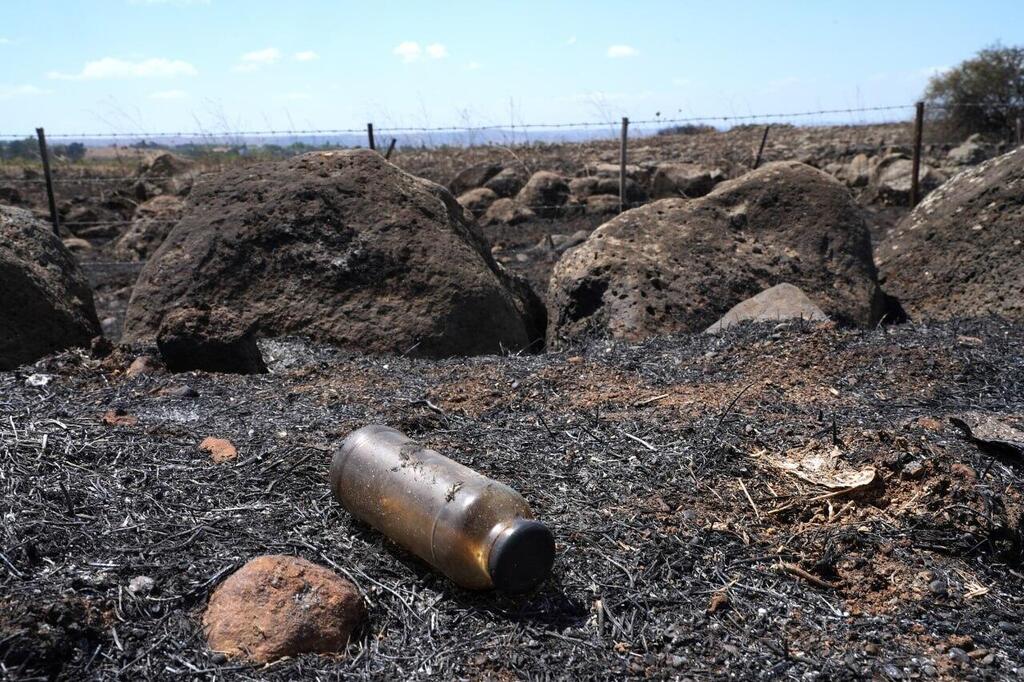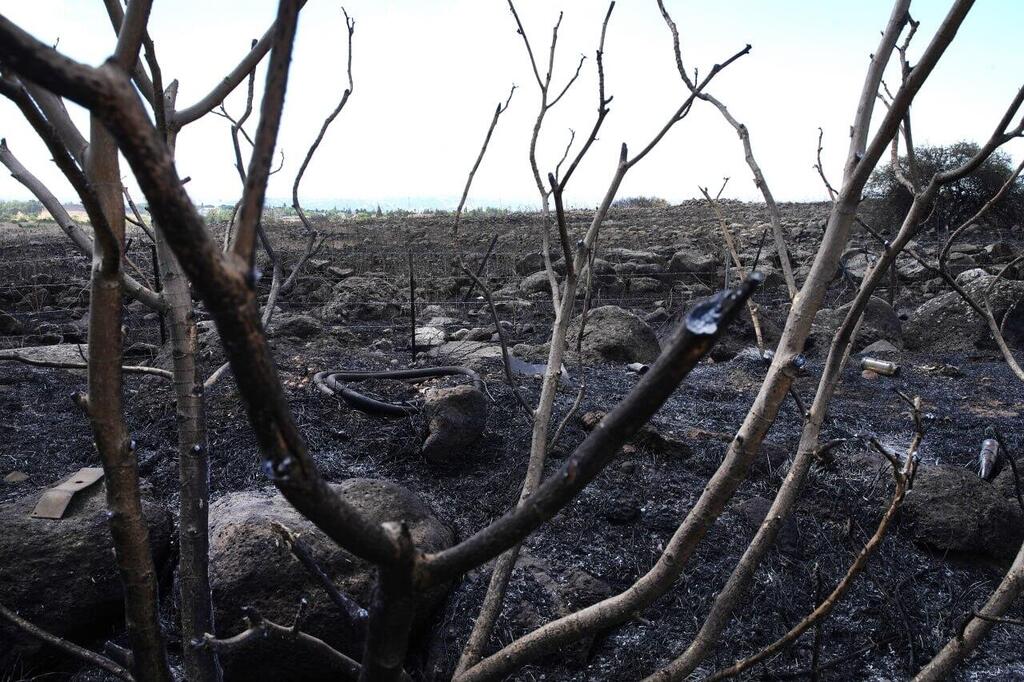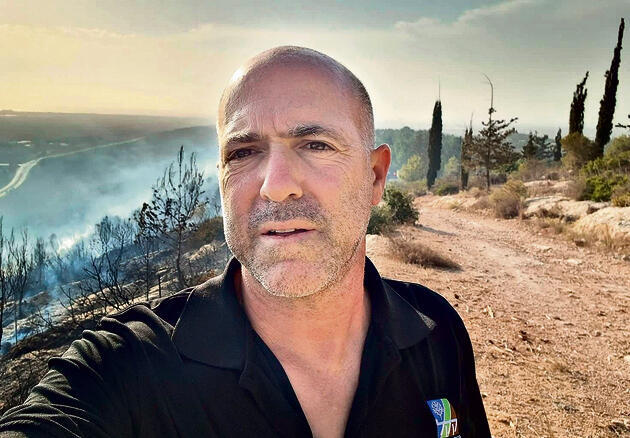Hezbollah destroys vast nature reserves in recurring rocket attacks. "I haven't slept in three days. "The rockets on Thursday were mainly in the Upper Galilee and the Golan Heights. They caused many fires, spreading rapidly. Our resource distribution is limited. We can't respond to everything. We focus on fires we decide need attention, and we invest all our effort there," said Rami Zaretski of the Jewish National Fund (JNF).
On Thursday, Hezbollah launched a retaliatory strike at Israel following the assassination of Muhammad Neamah Nasser, a senior figure in the terror organization. Hezbollah launched about 250 rockets and mortars across the north. On Friday and Saturday, the firing continued, causing several fires. Since the beginning of the war, around 11,000 acres have been burned in the Upper Galilee - about 1,200 of them in the past weekend alone. In the Golan Heights, the figure stands at about 9,500 acres burned.
Since the beginning of the summer, JNF forest rangers have been working around the clock. "From Thursday morning, as the rocket and mortar attacks began in the north, we had to deal with a non-stop number of fires in the Golan Heights, Hula Valley, and Upper Galilee," described Yigal Moyal, a senior official in the KKL's northern region.
The fire in the Upper Galilee was mainly concentrated in the Biriya Forest. "The fires continued into the night, and we finally got control on Friday," said Moyal. "Fires have a decisive impact on ecological systems. Fire is a natural process, and the natural world can cope with it when it reaches temperatures of 200–300 degrees. But a fire of such large scope, in multiple focal points, and due to environmental conditions reaching temperatures of over 600–700 degrees, is catastrophic for that ecosystem. It also affects animals. Mammals somehow escape from fires, but for slow-moving reptiles like tortoises, snakes, and lizards, their ability to escape is limited."
As a result, many nature reserves in the north were closed, and some were at risk of total destruction, including the Nahal Dishon, Nahal Dalton and Hazor Stream, Dalton Stream, and Meshushim Stream. The fires not only impact Israel's ecological assets but also hurt its economic interests. This damages the Israel Nature and Parks Authority by destroying nature reserves. For example, the Gamla Reserve generates 1.6 million shekels annually, while the Hula Valley Reserve generates about 1.8 million shekels. The impact is felt both in the north and the south. For instance, the Eshkol Park generated about 2.8 million shekels in 2022.
Large sums needed for recovery
It's impossible to estimate the extent of the damage in the north and the amount of money needed to restore the destroyed sites. In the south, the authorities requested approximately 71.6 million shekels for the nature reserves' restoration. The restoration of the Be'eri Reserve, for example, covering an area of 120 acres, is estimated at about 4.7 million shekels.
Zaretski, 55, is in charge of forest fire protection at KKL, and lives in Kibbutz Hanita. On October 8, he, his wife, and their four children, aged 9-18, evacuated together with other kibbutz residents. Zaretski remained in the kibbutz's first responders' unit, to continue to his fight against forest fires.
"All winter I was in the reserves, mostly planning exercises, procurement, and training. As the fire season approached, I returned to work, combining it with the first responders' unit. We've had fire incidents in the past, like during the Second Lebanon War in 2006, but now the events are more intense. Those who engage in firefighting have a direct connection to the trees. These are people whose profession is not firefighting but first and foremost forestry workers," he said.
Zaretski added, "Their secondary profession at KKL is firefighting during the fire season. Those who planted the trees in the winter have a special connection to them, and when there's a fire, we all rally to extinguish it and save every tree. We fight for every tree, hoping it will not burn. The recent fires in Biriya Forest, Ramot Naftali, and others were severe. We are optimistic. Most of the forest will regenerate naturally, and some areas will be replanted. Though we're exposed to daily fire, our family supports us, and I see this role as a mission. Some people fight in Gaza, and some fight on the northern border to keep it green."






